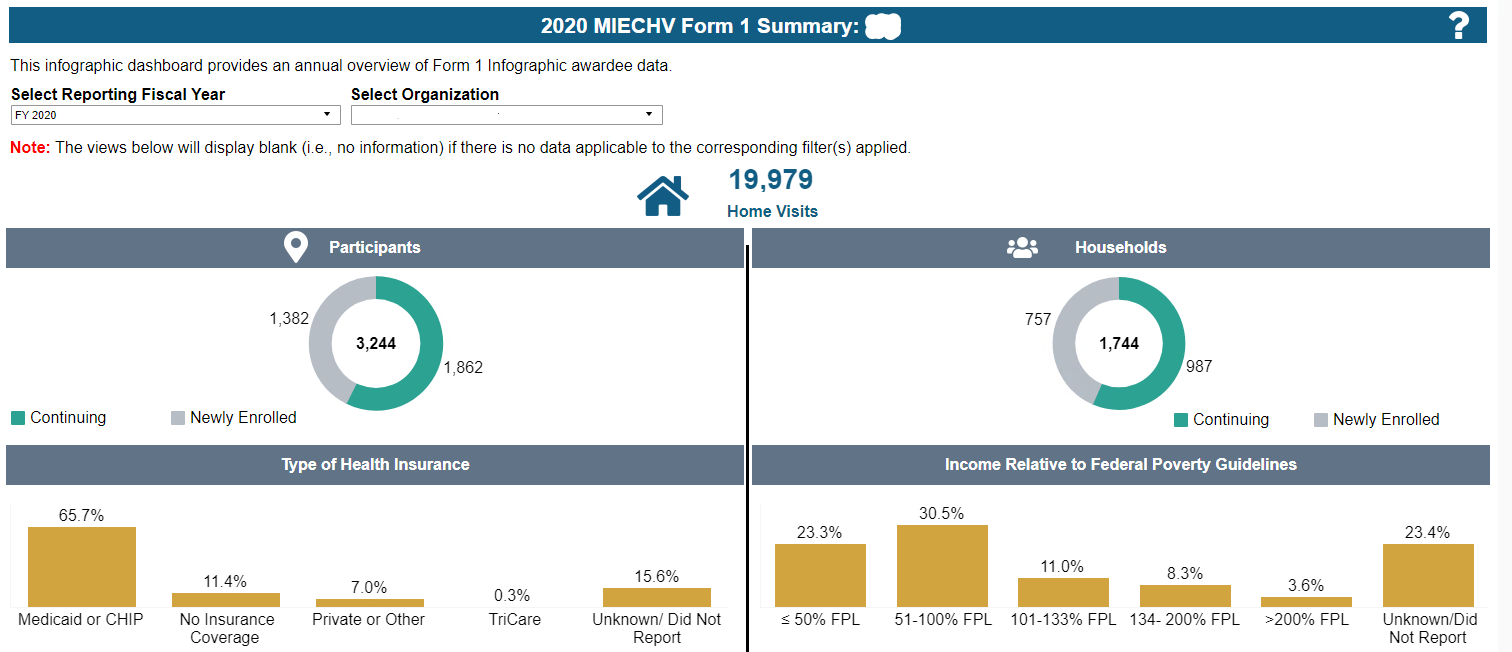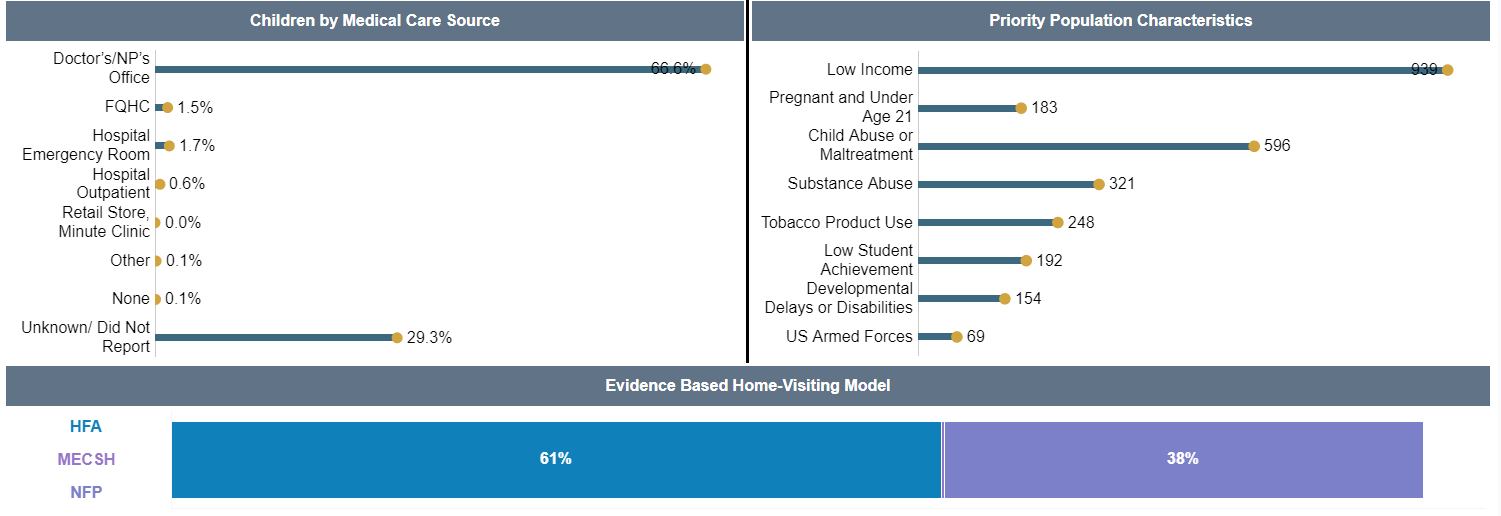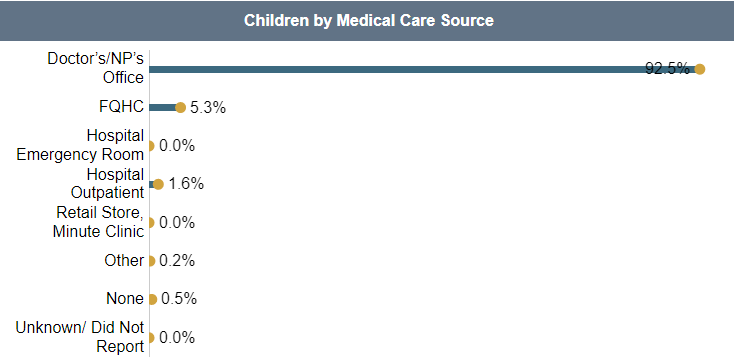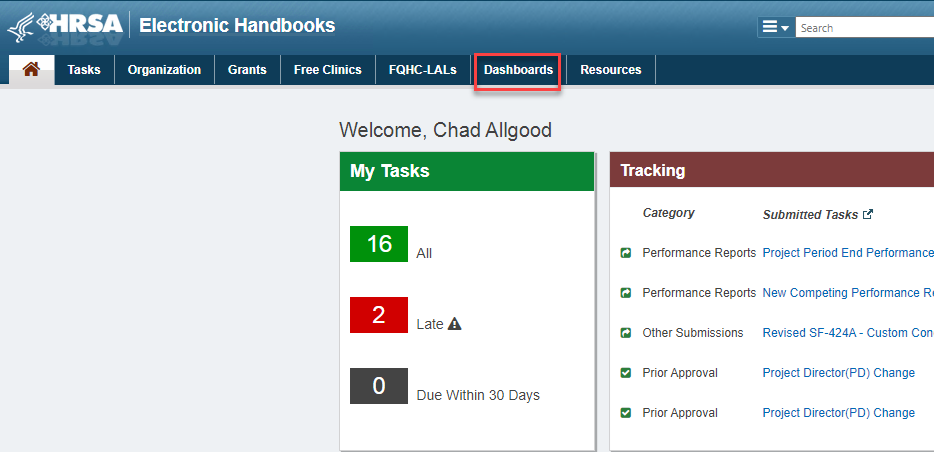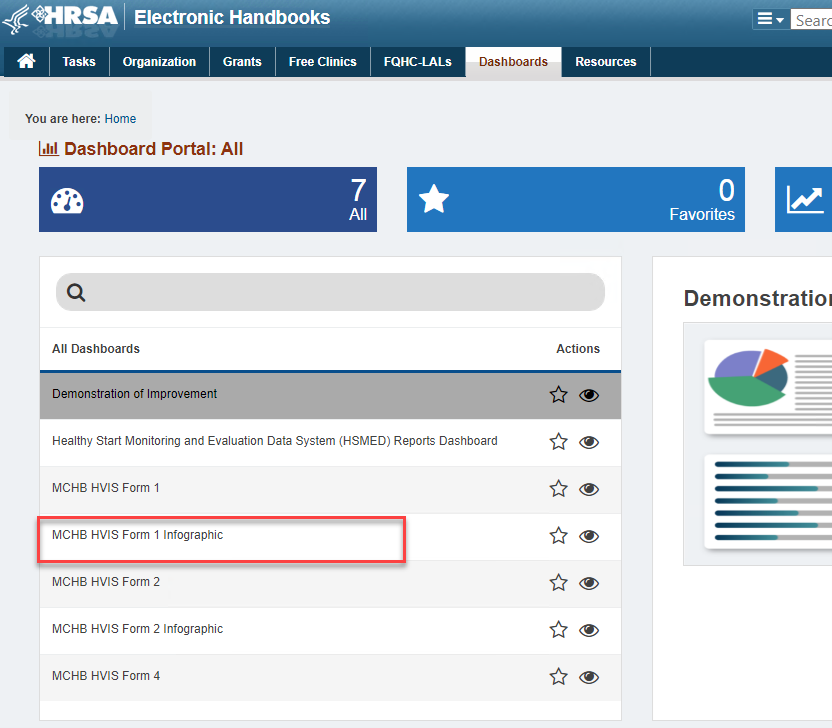Form 1 Infographic Dashboard | |
|---|---|
The Form 1 Infographic dashboard provides an annual summary overview of MIECHV awardee data on service utilization, participant demographics, and clinical indicators. The dashboard represents the data in the following categories:
Filters: The dashboard includes a single select filter for Reporting Fiscal Year. Visualizations can be filtered for different years starting from FY 2017. The organization filter will be limited to the awardee’s own organization data. Visualizations in this dashboard: The data for participants and households are displayed using donut charts. Data for health insurance type and income relative to federal poverty guidelines are displayed using bar charts. Children by medical care source and priority population characteristics data are displayed using line charts. Lastly, information on the evidence-based home-visiting model is displayed using a bar chart. On hovering over the charts, the corresponding values for the visualizations are shown in the tooltips. | |
Form 1 Infographic Dashboard Visualizations | |
| Home Visits: The total number of home visits completed is shown as a summary card in the dashboard. | |
| Participants: The donut chart demonstrates the number of participants served based on continuing and newly enrolled type. | |
| Households: The donut chart demonstrates the number of households served based on continuing and newly enrolled type. | |
Type of Health Insurance: The bar chart demonstrates the data in the form of percentage of participants by health insurance type based on the type of health insurance. | |
| Income Relative to Federal Poverty Guidelines: The bar chart demonstrates the data in the form of percentage of households based on the income relative to Federal Poverty Guidelines. | |
| Children by Medical Care Source: The line chart demonstrates the data in the form of percentage of index children based on usual source of medical care. | |
| Priority Population Characteristics: The line chart demonstrates the data in the form of the number of households based on the priority population characteristics. | |
| Evidence Based Home-Visiting Model: The bar chart demonstrates the data in the form of percentage of households based on the evidence-based home-visiting model. | |
Accessing the Dashboard in the EHBs | ||
|---|---|---|
| 1 | Login to the EHBs (https://grants.hrsa.gov) using Login.gov and two-factor authentication. For information about logging into the EHBs and Login.gov, refer to the EHBs Login Process help pages. You will land on the EHBs Home page. Click Dashboards on the Top Menu. | |
| 2 | You will land on the Dashboards list page, listing all the available dashboards. Select MCHB HVIS Form 1 Infographic Dashboard from the list page. | |
| 3 | Click on the View Dashboard or the Eye icon link to open the dashboard. | |
Download |
|---|
The tables and visuals on the dashboard can be downloaded in the following formats: image, crosstab, data, PDF, and PowerPoint. By default, when there are no views selected, the dashboard will not display the download options for data and crosstab formats. Click once on the respective visual/table that needs to be downloaded and the options to download in data and crosstab format are activated. |
